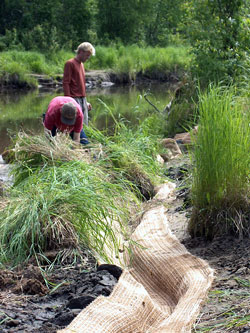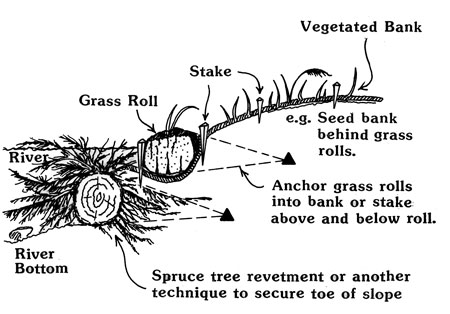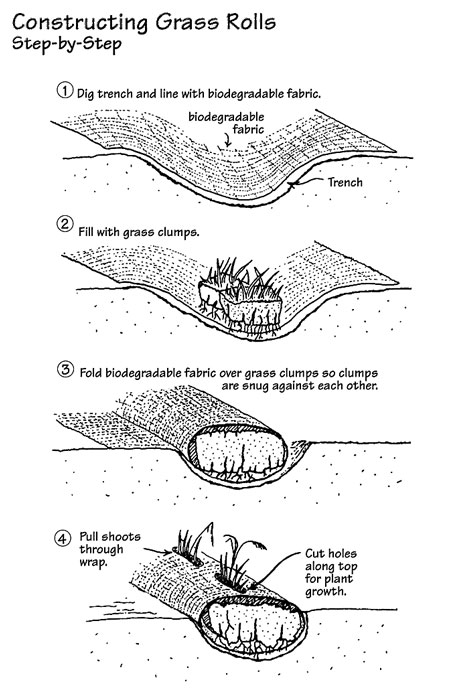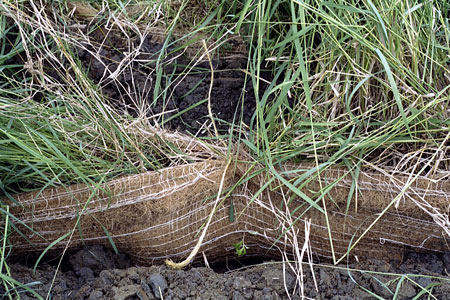Streambank Revegetation and Protection: A Guide for Alaska
Revegetation Techniques:Grass Rolls

Grass rolls are often used to revegetate lake shores and streambanks where grasses and grass-like plants have been the primary vegetation type and where seeding is impractical due to fluctuating water levels. Clumps of grass sod are placed tightly together, side by side with shoots pointing up, in a sausage like structure and held together with biodegradable fabric and twine. The roll is then anchored in place. This technique reintroduces herbaceous vegetation to a site while simultaneously providing some structural stability. Ultimately, the sod will form a dense root system along the streambank and provide structural protection to the site. When the grasses go dormant at the end of each growing season, their leaves hang over the streambank and provide rearing habitat for fish.
Construct a grass roll by laying out a length of the biodegradable fabric; place clumps of sod tightly together in the middle of the fabric. Bluejoint reedgrass, Calamagrostis canadensis, is the primary grass used for this technique and should be collected from sites away from streambanks. Beach wildrye, Leymus mollis, has also been used for streambank plantings, and although it produces a strong rhizome it does not form the dense sod characteristic of Bluejoint. Beach wildrye also is suitable for brackish water.
Wrap the sides of the biodegradable fabric over the sod clumps to make a sausage-like roll. Tie the roll every few inches with twine. Cut holes in the biodegradable fabric wrap to expose the sod shoots. Try to create the grass roll on-site so that the length of the roll(s) matches the length of the area being planted.

Dig a shallow trench in which to install the sod roll along the ordinary high water (OHW) level after the toe of the slope has been protected. Grass rolls may also be constructed on-site in trench using transferred sod. Anchor the grass roll securely into the bank. Earth anchors will be required for installations along streams and rivers. Stakes may be adequate for anchoring a grass roll in low-energy environments such as protected lakeshores. Revegetate adjacent areas, if necessary. Both the upstream and downstream ends of the grass roll need to transition smoothly into a stable streambank, undisturbed vegetation, or other revegetation technique.
Grass rolls can also be used for wetland revegetation. Several sedge species are suitable for this application; they include for freshwater- Carex aquatilis, C. saxatilis, and for brackish water- C. Lyngbyaei.
Grasses and sedges are particularly sensitive to foot traffic and should be protected by elevated walkways or planted in areas with restricted access to encourage survival.
Advantages:
- Inexpensive
- Uses simple material requiring little mechanized work
- Little training required
- Reestablishes natural condition
- High survivability
- Best around lakes and low velocity areas
- Provides erosion control
Disadvantages:
- Not recommended for high velocity environments
- Requires protection from trampling


